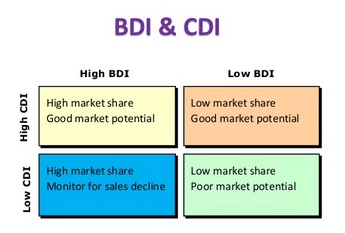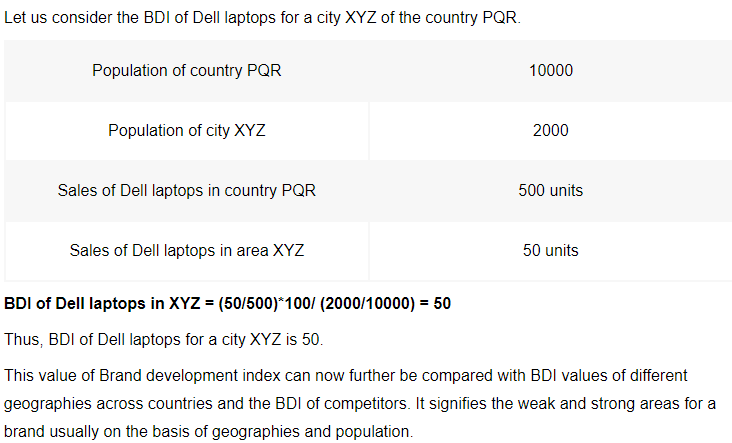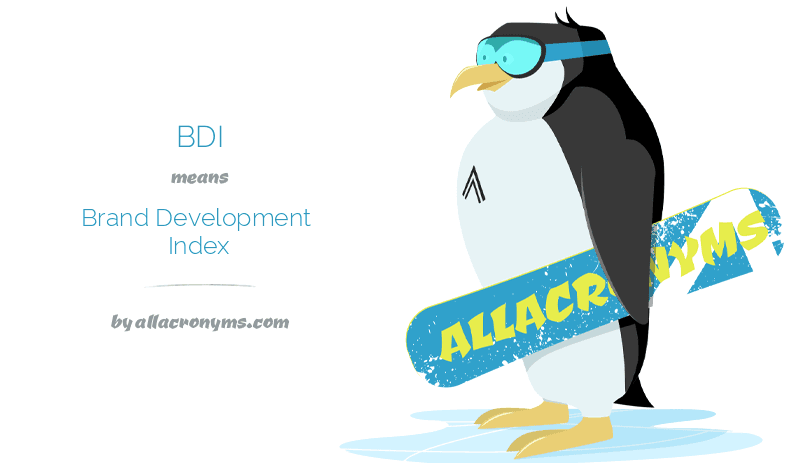Table of Contents
What is Brand Development Index (BDI)?

Why is a brand development index important?
How to Calculate a Brand Development Index?

Formula for BDI
BDI is a useful tool in creating an effective market segmentation, target strategy, and brand position as it gives the brand a measure of its market and consumer population.
BDI = (% of total sales of a brand in a particular market) / (% of the total population in a particular market) x 100
The Brand Development Index must be an integer.
A brand must internally evaluate its values, uniqueness, and what the customer wants. Research is needed after a comprehensive internal assessment. Brand advertising distinguishes the brand from its competitors and it is important for all shareholders to demonstrate that trust by placing trust in the brand and customer satisfaction at all touchpoints.
Brand Development Index and Category Development Index
Companies calculate the brand development index to describe the relative performance of their business to a specific group of customers. You must be a master of information such as demographics or psychology. As a result, you get data on strong and weak segments for specific companies. Additionally, you can use this indicator to assess a company’s presence in a specific target audience.
The Category Development Index defines the sales of a category of goods in the market relative to the average performance among consumers. It helps companies to get information about the performance of a particular product category in specific customers and to identify the strong and weak groups for product categories.
When used with BDI, CDI can be useful in any marketing strategy. This allows companies to access the data needed to allocate advertising budgets to specific areas to increase product category awareness and revenue. Learn about rich media advertising.
Companies need to measure both CDI and BDI to come to a conclusion about the market.
There are 4 possibilities:

1. High BDI and high CDI- In this case, both category and brand are said to work well. For example, if we consider the soap category under Lux or Dow, both have a high BDI. This suggests that the company should build more on the brand and stay in expansion mode.
2. High CDI Low BDI – In this case, the category works well but the brand is not able to get the desired market share. For example, if Margo does not perform well in the soap segment in a particular market, its BDI will be low. The company should strive to attract more customers and gain market share.
3. Low CDI High BDI- When a category is not working well but some brands are working well. For example, the talcum powder segment is declining, although talcum is doing well with a 50-60% market share. The company should try to revive the brand or gradually divert the business.
4. When low CDI is high CDI- brand, as well as both category does not work, the brand should leave the business. For example, Spinge or Yardley has a very small market share in the non-performing category. Learn about Ad network
Example Of Brand Development Index

Hope! You find this article informative. Don’t forget to share and leave comments. Thank You.






2 Comments
RSS Wiadomości
Definitely, what a great blog and illuminating posts, I will bookmark your site.Best Regards!
Marielle Boer
I regard something truly interesting about your blog so I saved to favorites .